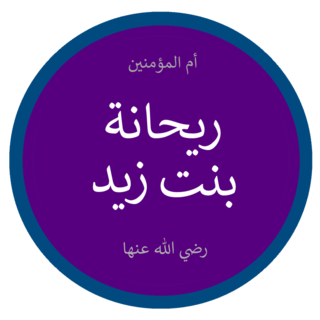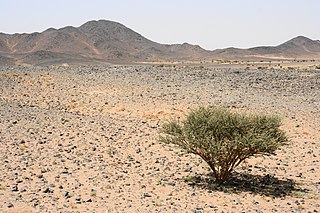Related Research Articles

Muhammad was an Arab religious, social, and political leader and the founder of Islam. According to Islamic doctrine, he was a prophet divinely inspired to preach and confirm the monotheistic teachings of Adam, Abraham, Moses, Jesus, and other prophets. He is believed to be the Seal of the Prophets within Islam, with the Quran as well as his teachings and practices forming the basis for Islamic religious belief.
The Constitution of Medina, also known as the Charter of Medina, is the modern name given to a document or documents believed to have formalized the agreement between Muhammad, his followers, and the residents of Medina. Portions of this constitution are corroborated by multiple sound hadith reports. Its validity in its stated single form, however, has been called into question, as there is no single sound chain of authorities (isnad) supporting it. There are differences of opinion as well as to how many documents the constitution comprises—from one to eight. It is also unclear with which Jews this agreement was made, whether it was only with some of the smaller Jewish social units that had lost their tribal structure and affiliated with the Arabs, with the Judaized Arabs, or also included the three major Jewish clans in the city, namely Banu Qaynuqa, Banu Nadir, and Banu Qurayza.
Ṣafīyyah bint Ḥuyayy was the tenth wife of Muhammad. She was, along with all other wives of Muhammad, titled Umm-ul-Mu'mineen or the "Mother of Believers".

The Battle of the Trench, also known as the Battle of Khandaq and the Battle of the Confederates, was part of the conflict between the Muslims and the Quraysh, where this time the Quraysh took the offensive and advanced on the Muslims, who defended themselves in Medina by digging a trench around their settlement at the suggestion of Salman the Persian. The battle, which took place in 627 and lasted around two weeks, was lightly fought, with the Muslims reported to have suffered five to six casualties and the Quraysh three.

The military career of Muhammad, the Islamic prophet, encompasses several expeditions and battles throughout the Hejaz region in the western Arabian Peninsula which took place in the final ten years of his life, from 622 to 632. His primary campaign was against his own tribe in Mecca, the Quraysh. Muhammad proclaimed prophethood around 610 and later migrated to Medina after being persecuted by the Quraysh in 622. After several battles against the Quraysh, Muhammad conquered Mecca in 629, ending his campaign against the tribe.

The Banu Qurayza were a Jewish tribe which lived in northern Arabia, at the oasis of Medina. They were one of the three major Jewish tribes of the city, along with the Banu Qaynuqa and Banu Nadir, before they were massacred by the Islamic prophet Muhammad.
The Banu Nadir were a Jewish Arab tribe that lived in northern Arabia at the oasis of Medina until the 7th century. They were expelled by the Islamic prophet Muhammad after his defeat at Uhud against the Quraysh, who finally took decisive action against his constant marauding attacks on their trade caravans and to revenge themselves for Badr.
Ka'b ibn Asad was the chief of the Qurayza, a Jewish tribe that lived in Medina until 627. A tribesman, Al-Zabir ibn Bata, claimed that his face "was like a Chinese mirror, in which the girls of the tribe could see themselves", presumably meaning that Kaab had a youthful and innocent appearance.
The Banu Qaynuqa was one of the three main Jewish tribes that originally lived in Medina before being expelled by the Islamic Prophet Muhammad. They were merchants and were known to be wealthy. They resided in the south-west part of the city and were previously allied with the Banu Khazraj.
Muhammad ibn Muslim ibn Ubaydullah ibn Abdullah ibn Shihab az-Zuhri, also referred to as Ibn Shihab or az-Zuhri, was a tabi'i Arab jurist and traditionist credited with pioneering the development of sīra-maghazi and hadith literature.
The Banū Aws or simply Aws was one of the main Arab tribes of Medina. The other was Khazraj, and the two, constituted the Ansar after the Hijra.
The Banu Khazraj is a large Arab tribe based in Medina. They were also in Medina during Muhammad's era.
The Banu Sa'ida was a clan of the Banu Khazraj tribe of Medina in the era of Muhammad. The tribe's full name was the Banu Sa'ida ibn Ka'b ibn al-Khazraj.

Banu Najjar or Banu al-Naggar is the name of several unrelated historical and modern-day tribes throughout the Arab world. The individual tribes vary in religious composition.
The Banu Sulaym is an Arab tribe that dominated part of the Hejaz in the pre-Islamic era. They maintained close ties with the Quraysh of Mecca and the inhabitants of Medina, and fought in a number of battles against the Islamic prophet Muhammad before ultimately converting to Islam before his death in 632. They took part in the Muslim conquest of Syria, and established themselves in the Jazira, while part of the tribe remained in the Hejaz. During the early Muslim period, the tribe produced notable generals such as Safwan ibn Mu'attal, Abu'l-A'war and Umayr ibn al-Hubab. Those who remained in Arabia were largely absorbed by the Banu Harb of Yemen beginning in the 9th century, while those in Syria and the Jazira were expelled to Upper Egypt by the Fatimid Caliphs in the late 10th century for supporting the Qarmatians. In the mid-11th century, a prolonged famine in Egypt prompted the tribe to migrate westward with the Banu Hilal into Libya. There, the Sulaym and its sub-tribes established themselves mainly in Cyrenaica, where until the present day, many of the Arab tribes of that region trace their descent to the Sulaym.

Rayhānah bint Zayd was a Jewish woman from the Banu Nadir tribe, who became a wife of the Islamic prophet Muhammad, after the Incident of Banu Qurayza in 627 CE. She is considered by some Muslims as being one of Muhammad's wives.
The Islamic prophet Muhammad's views on Jews were formed through the contact he had with Jewish tribes living in and around Medina. His views on Jews include his theological teaching of them as People of the Book, his description of them as earlier receivers of Abrahamic revelation; and the failed political alliances between the Muslim and Jewish communities.
The Jewish tribes of Arabia were ethnic groups professing the Jewish faith that inhabited the Arabian Peninsula before and during the advent of Islam. In Islamic tradition, the Jewish tribes of the Hejaz were seen as the offspring of the ancient Hebrews.

The Battle of al-Harra was fought between the Umayyad army of the caliph Yazid I led by Muslim ibn Uqba and the defenders of Medina from the Ansar and Muhajirun factions, who had rebelled against the caliph. The battle took place at the lava field of Harrat Waqim in the northeastern outskirts of Medina on 26 August 683 and lasted less than a day.
The Invasion of Banu Qurayza took place in Dhul Qa‘dah during January of 627 CE and followed on from the Battle of the Trench.
References
- ↑ "Michael Lecker, 1951‒". Library of the Dominican Institute for Oriental Studies. Retrieved 8 August 2022.
- ↑ Nicolet Boekhoff-van der Voort (11 August 2011). The Transmission and Dynamics of the Textual Sources of Islam: Essays in Honour of Harald Motzki. Brill, 2011, p. xiii. ISBN 978-9004203891 . Retrieved 8 August 2022.
- 1 2 "Biography of Prof. Michael Lecker". Gorgias Press. Retrieved 8 August 2022.
- ↑ Karim Samji. Narrating Early Islamic History: A Dissertation submitted in Partial Fulfilment of the Requirements for the Degree of Doctor of Philosophy (Near Eastern Studies) in the University of Michigan 2013, p. 6 (PDF). University of Michigan. Retrieved 8 August 2022.
- ↑ Tilman Nagel (6 July 2020). Muhammad's Mission: Religion, Politics, and Power at the Birth of Islam. Walter de Gruyter GmbH, 2020. ISBN 9783110675078 . Retrieved 8 August 2022.
- ↑ Angelika Neuwirth (19 February 2019). The Qur'an and Late Antiquity: A Shared Heritage. Oxford University Press, 2019, p. 59. ISBN 978-0-19-992896-5 . Retrieved 8 August 2022.
- 1 2 "Biography of Prof. Michael Lecker at Hebrew University of Jerusalem". Hebrew University of Jerusalem. Retrieved 8 August 2022.
- 1 2 3 4 5 "Contemporary Orientalists: Michael Lecker". Oriental Studies. Retrieved 8 August 2022.
- ↑ "Michael Lecker | the Hebrew University of Jerusalem - Academia.edu".
- ↑ "Michael Lecker". Regesta Imperii, Akademie der Wissenschaften und der Literatur. Retrieved 8 August 2022.